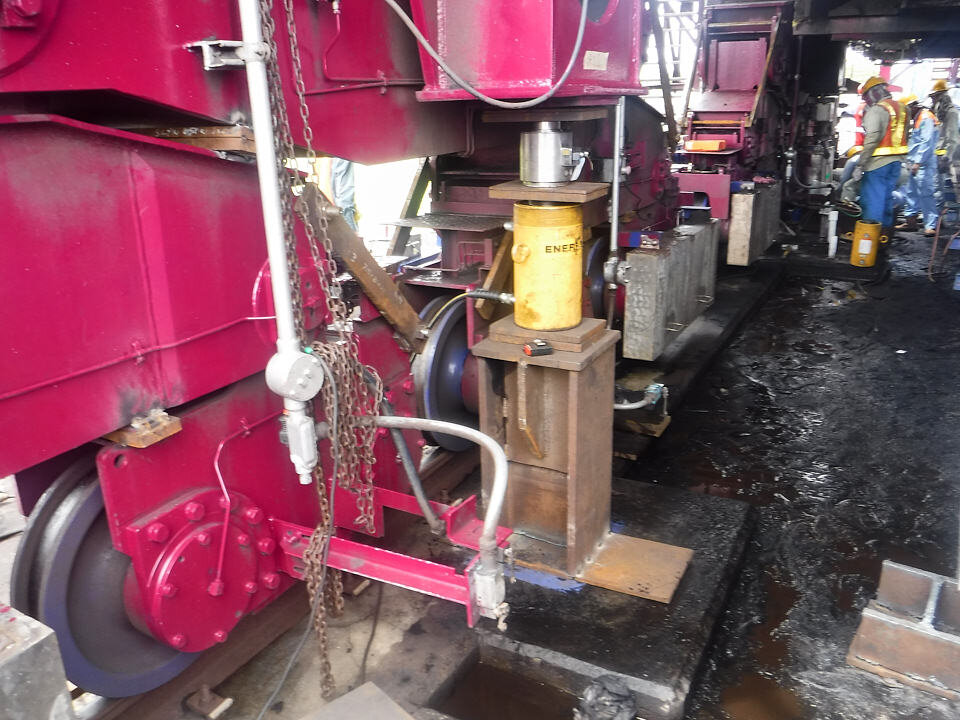During the commissioning process for a balanced mobile Bulk Materials Handling Machine (BMHM) such as a bucketwheel reclaimer, stacker, bucketwheel stacker reclaimer or shiploader, an important step is to balance and weigh the machine. Although it may be tempting to forego this vital step due to schedule demands and the impending commencement of operations, it is imperative that proper balancing and weighing be carried out to ensure the safe and reliable operation of the machine for many years to come.
Validates the Design Intent
Balancing and weighing of a new machine on site allows for comparisons to be made between the measured and design values. Any discrepancies regarding the luffing structure balance and total weight of the machine may require further investigation and rectification prior to commencement of operation. This practical validation step is an important hold point before handover. The Australian and international standards for mobile BMHM do not allow the as-constructed weight to be more than a 5% variation to the design value, in which case the design checks and calculations must be repeated.
Avoiding False Confidence
If only balancing or weighing is undertaken, and not both, this does not provide the machine’s owner a complete picture of their new investment. As an example, weighing alone might indicate the machine’s mass matches the design value. But this might give the project team a false sense of confidence, because without also undertaking appropriate balance and centre of gravity checks on-site the machine’s stability cannot be verified and it might be improperly balanced, which may not be obvious from weighing alone.
Achieve the Fatigue Service Life
The stability, balance and centre of gravity is critical for a machine that undertakes luffing and/or slewing motions, such as a bucketwheel reclaimer, stacker or shiploader. If the machine is not properly balanced, the fatigue stresses caused by each luffing and/or slewing motion can be amplified and the slew bearing load distributions may also be outside its design load envelope. As such, an incorrectly balanced machine will have a shortened slew bearing service life and premature onset of fatigue cracking.
Confirm Wheel Loads on Rail
The loads imposed on the wheels and rails for a bulk materials handling machine depend not only on the machine’s overall weight but also its balance and overall centre of gravity. An overweight or incorrectly balanced machine will have excessive wheel loads which can lead to wear issues for the wheels and rails. It can also mean that the long travel drive power may not be adequate for the machine to operate efficiently. These increased loads can also have significant consequences for the wharf or rail foundations, which were designed and built for a specific design wheel load spectrum.
The Best Methodology
The best method for balancing and weighing will depend on the design and configuration of the particular machine, therefore using an incorrect methodology can give erroneous or inconclusive weight and balance results. There are many factors to consider which add together to create complexity. Taking measurements with the boom horizontal is sufficient for some machines but not for others. If the conclusion is that the machine is overweight or improperly balanced, what is the path forward? Adding or removing counterweight can have significant implications elsewhere on the machine that need to be fully understood.
In recognition of the importance of weighing and balancing, the requirement of Australian Standard AS4324.1 (2017) states that:
“After a machine has been constructed, the mass and centre of gravity of the as-built machine shall be accurately determined”
The team at LEC are experienced in preparing suitable procedures to validate the luffing structure balance and weighing of the entire machine in accordance with the requirements of AS4324.1 as well as other international standards such as ISO 5049-1 and FEM Section II (2 131 / 2 132).
Click here to contact LEC and discuss the best methodology for weighing and balancing your particular bulk materials handling machine.





